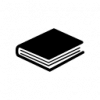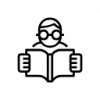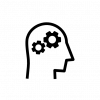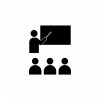Teaching context and philosophy
My teaching is informed by my research and utilizes writing across the curriculum, peer teaching and experiential learning approaches. My goal in teaching is for students to see knowledge from the perspective of a researcher and to inspire in them a passion for learning and discovery. I utilize class activities designed to improve student understanding of the process of knowledge production, from research design and conduct, to publication, debate within the academic community, dissemination via mass media, and public consumption.
I leverage my background in biological anthropology to nurture student curiosity about why the human body has the structure that it does. Rather than rote memorization of dry lists of “facts”, or presenting unscientifically determined “norms,” which unfortunately is the approach of many anatomy textbooks, students learn to approach the subject scientifically through the critical evaluation of evidence. Through hands-on learning with fossil casts, real bones and wet specimens, students learn the evolutionary origins of different aspects of human anatomy and their clinical implications, modern human variability by individual, age and sex, and the plasticity of the human body. I also frequently incorporate my own research findings. This approach keeps students engaged and also demonstrates to them the value of anatomical knowledge beyond their narrow field. I also regularly bring students to Mexico to provide experiential learning in bioarchaeology as well as opportunities to collaborate and interact with Mexican and Maya archaeologists and local Indigenous communities in Yucatan, Chiapas and Tabasco.
With regard to course materials and assessments, I utilize blended learning to engage students early and often. I have designed learning and teaching activities and assessments utilising such physical and digital resources as cadaver prosections, anatomical models, radiographs, virtual histological slides, SECTRA, VH Dissector, and Complete Anatomy; online quizzes and exams in Inspera, Moodle and Blackboard; and adaptive tutorials in Smart Sparrow and H5P. I have taught students of medicine, allied health, engineering and archaeology.
The main goals of higher education are not only to assist students to obtain subject knowledge but also to facilitate a smooth transition into the working world and to produce an informed citizenry that is ready to meet the challenges of the future. This is because when the term ends, any facts, theories, and formulae learned may soon be forgotten. Whether or not students pursue careers in research, learning these different sides of the research endeavor shows them how to critically evaluate knowledge that has entered the public realm as well as the research it is based on, while also enabling them to formulate and articulate their own views based on that knowledge.




